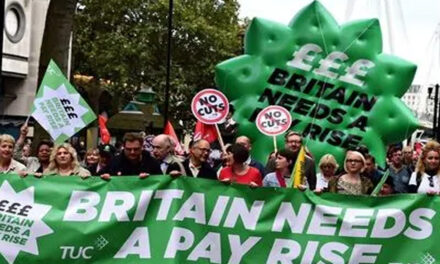Experts say there is a high chance that whatever caused the market in 2018 to be in such bad shape will disappear and make way for a better market status in 2019. This might provide 2019’s stock market with great “tailwinds for stock,” as stated by some strategists.
After going through the worst December ever since 1931, plus the worst year starting the financial crisis, stocks enter the market in the new year with uncertainty. The market is still vulnerable to the fluctuations. These fluctuations are the same ones who caused the notable intraday swings in the last days of December. Trading at about 2,495, the S&P 500 is low at 6.6 percent for 2018 while being down at 9.6 in December.
As the last four months of 2018 approached, the market noticed a decline in the growth rate of the economy and profit. It was also then that Fed rate hikes and trade wars would grow as the deterioration occurs. However, many Wall Street strategists maintain a positive outlook for the bull market. These experts predict its extension for one more year with an average end target of 3,000, which is a 20 percent gain.
Experts are Optimistic
Jonathan Golub, the chief U.S. equities strategies at Credit Suisse, has expressed his confusion on the lack of justification for the pullback in the market. He also stated that “markets will do what they’ll do.” He also found an upside there, and quite a significant one at that. He believes that the market has already experienced rock bottom. Another positive happening is that the earnings ratio had fallen below 15 from 18.4 at the beginning of 2018. Jonathan Golub has also set a target for S&P 500 at 2,925 for the year 2019.
Although the recent days with high rates have been hopeful for some, other strategists state that the “market could still stay volatile” and fluctuate in both directions as it tries to create a bottom among the lows of the previous week.
The chief investment strategist and fund manager at QMA, Ed Keon, is undeniably positive about the market. He expects the growth rate of earnings to become flat in the new year, as opposed to about 7 to 8 percent growth as expected by Wall Street. Despite all these positive comments, he still believes the continued significant risks that the market is facing.
Keon also shared how December became “one of his most actively traded months.” On December 3, he sold stocks after U.S. President Donald Trump met with the Chinese President Xi. Up until last week, when he started to purchase stocks at a much cheaper rate, all he did was vend in rallies every day.
Keon also believed December to be a “very active month,” as he usually does not experience a massive amount of trading in the course of a single month. He also added that they bought aggressively in the preceding week.
The Fed Outlook
For a long time, the stock market has been cautious in fear of the Federal Reserve’s continued rate hike agenda. In the future market, however, there is no scheduled raise in the federal fund up to the next year, at least. For the year 2020, the market is seeing an opportunity for a rate cut rather than a hike.
In its December forecast, the Fed predicted two rate hikes scheduled for next year. What scared the market, however, is the comment dropped by Fed Chairman Jerome Powell. He expressed the Fed’s intention to permit securities still to be rolled off its balance sheet as they reach maturity, which in turn shrinks the balance sheet. According to some experts in the market, the Fed program is attempting to remove liquidity from the market which might affect stocks indirectly with the European Central Bank ending their asset purchases.
Golub stated that the Fed was faced with “tightening monetary conditions” in the last year. By next year, the Fed might be done with raising rates. He also said that by looking at the now weak inflation rate, one might conclude the end of the Fed. Golub also added that the Fed serves as a sign for something out of sync in the market, which is what the market is struggling with, in the first place.
With a near 40 percent decline in oil prices during the last four months of 2018, economists are hoping that the inflation comparisons would weaken.
Golub expressed his thoughts about a possible positive surprise for the market by comparing how expensive the market started in 2018 versus in 2019.
The Trade Outlook
Despite the lack of transparency as to how much progress there is and how it came to be, President Trump tweeted some positive things regarding the developments over the weekend. He has set a deadline for the trade deal on March 1, which if not met, would result in the continuation of tariffs on Chinese imports.
Keon called it a “positive catalyst for the market,” in case we can reach long-term fair peace on the war on trade. Golub even called it a “wild card.”
However, some experts still expressed their doubts. For examples, economists from Goldman Sachs dropped their predictions to 2 percent on the first six months of 2019, noting that “more tariffs are likely.”
But what Golub wants the market to understand that the tariffs are not for a short-term solution. It would take some time and if it becomes right, the trade relationship of the two countries would be better and might even be favorable for markets.
Golub also warned about the false comparisons between 2018 and 2019, claiming that some comparisons are not fair. He also stated that despite the growth rate for this year is slower, it would not become a problem, as management will be cautious in their outputs and reports.
One more positive thing has been the descent in Treasury yields which were counted as stocks that were sold. As yield moves opposite to price, the 10-year yield has declined up to less than 2.70 percent after trading at peak 3.25 percent this year. Yield also affects mortgages as well as other loans.














